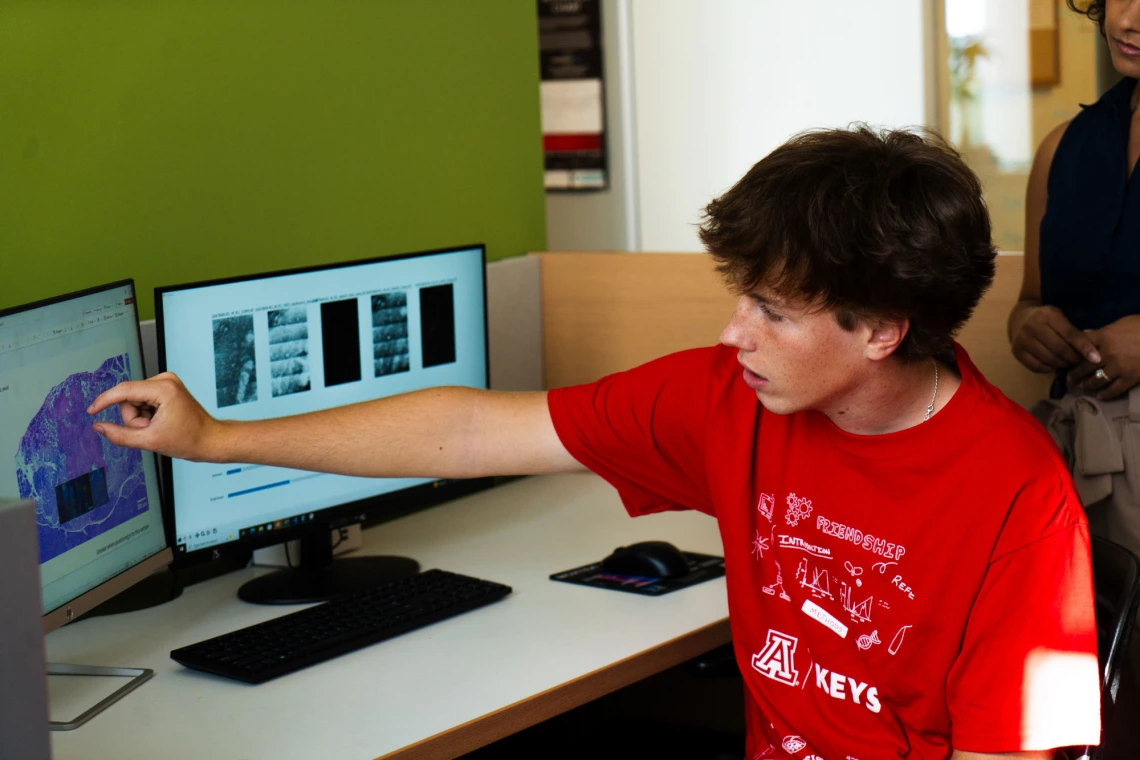Training algorithms to spot cancer
2025 Tucson KEYS intern Ethan Hancey (he/him) combined optics and artificial intelligence to advance cancer detection in the lab of Travis Sawyer.

2025 Tucson KEYS intern Ethan Hancey helped build a system under the mentorship of MD/PhD student Helena Hurbon that uses texture-based image analysis to tell the difference between healthy, cancerous, and borderline tissue.
Emilia Gazman, BIO5 Institute
In the lab of Travis Sawyer, assistant professor of optical sciences at the University of Arizona Wyant College of Optical Sciences, researchers are combining optics and artificial intelligence to advance cancer detection. They are training computers to analyze microscope images and detect disease instantaneously. This work could help doctors diagnose tumors and cancer earlier so they can make more informed decisions during surgery.
Tucson KEYS intern Ethan Hancey (he/him) joined the Sawyer lab to study pancreatic cancer, one of the deadliest and hardest-to-detect cancers.
“I had excellent mentors who inspired me, and I want to serve in that role for future generations of scientists and engineers,” Sawyer said. “Science can be intimidating and having someone who’s faced those challenges makes a big difference.”

Helena Hurbon (left) shows a tissue sample to Ethan Hancey (right).
Emilia Gazman, BIO5 Institute
Working with MD/PhD student Helena Hurbon, Hancey helped build a system that uses texture-based image analysis to tell the difference between healthy, cancerous, and borderline tissue. He used Python, a computer programming language, to process microscope images and extract the data needed to train machine learning models.
“The coolest part of being a research mentor is that it reignites your curiosity,” said Hurbon. “When students ask ‘why’ questions and I don’t know the answer, it pushes me to go explore again.”
Hancey's work contributes to the goal of helping surgeons understand exactly where to stop cutting by understanding where the tumor ends and healthy tissue begins.
“It’s really rewarding to put in the effort and see something you’ve built actually work,” said Hancey. “This summer helped me see that research is a real path for me. I’ve learned that the effort you put in truly shapes your experience—and that motivates me to work harder, not just in science, but in life.”

(Left to right): Travis Sawyer, Helena Hurbon, and Ethan Hancey.
Emilia Gazman, BIO5 Institute
Take a closer look at how KEYS interns are helping advance real-world research across Arizona.

